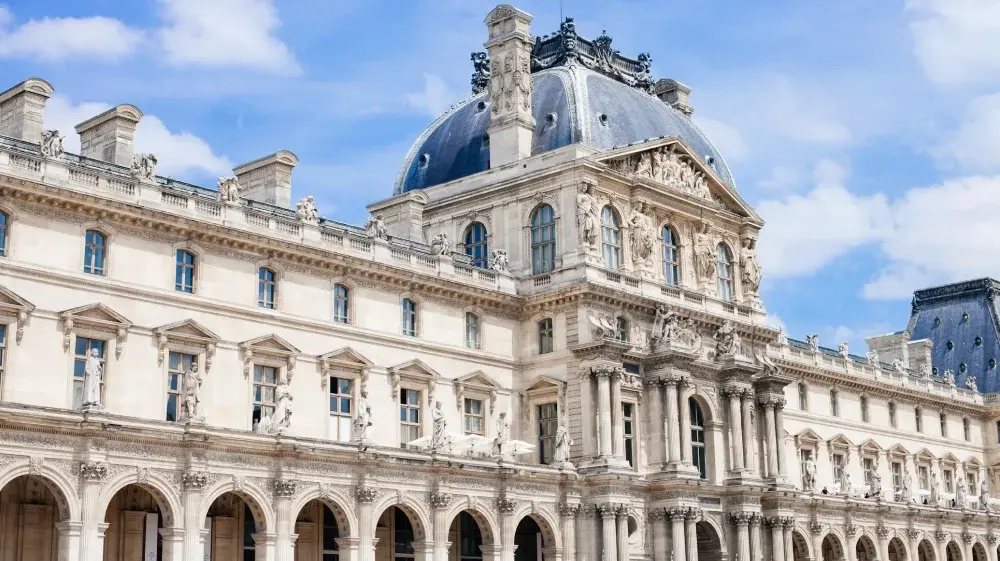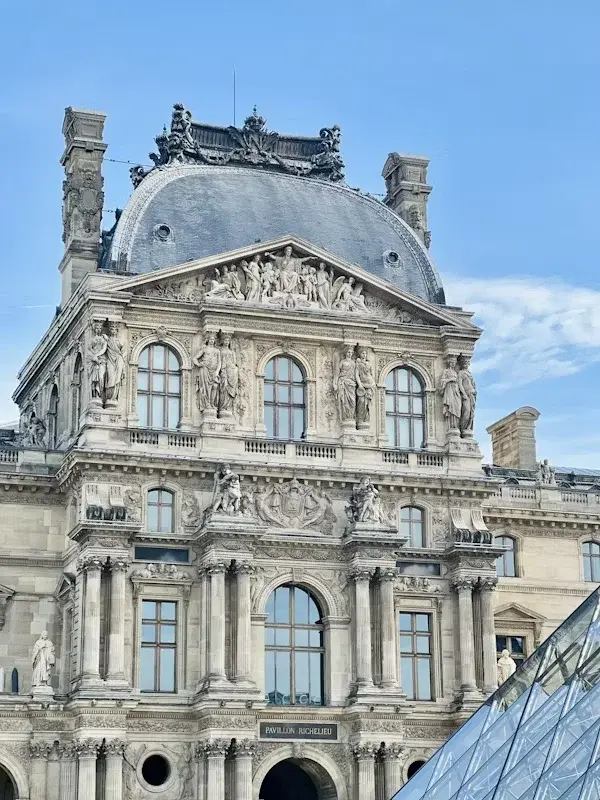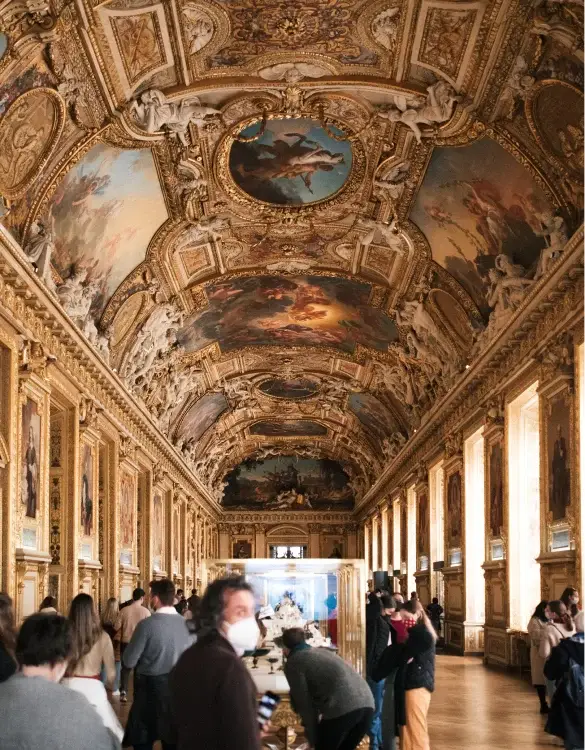A cornerstone of Parisian history and culture, the Louvre Palace is a testament to the evolution of architecture and art, both for its construction and the wonders of the world it holds within its halls.
Originally constructed and completed as a fortress in the late 12th and early 13th century, the Louvre Palace has undergone countless transformations that have led it to the image it presents today – one of the greatest art museums in the world.
Nestled on the right bank of the Seine River, the Louvre building is a timeless structure and a living chronicle of France’s political, cultural, and artistic journey through the centuries.

The Louvre’s architectural journey is a demonstration of France’s socio-political landscape, from its position as a mediaeval fortress under King Philip II to the expansion of its original purpose to include the intermittent usage of the Louvre building as a royal residence between the 1300s and the 1700s and, post-1793, as the museum it is today. One of the oldest sections of the Palace still stands as the Lescot Wing, dated from the 1540s after the renovation by King Francis I.
Other parts of the Louvre Palace’s architecture history also remain, such as the expansion of the building by various Kings across history, renovations by each era’s Le Louvre architect, and so forth. Still, it is also true that in the 21st century, all of this has culminated in the Louvre Palace becoming one of the best galleries in the world.
Regardless, in terms of architecture itself, each layer tells its history. During the reign of King Francis I, the Louvre acquired a Renaissance facade and, at other points in time, mirroring the larger socio-political elements of society, amalgamated endless elements of mediaeval, Renaissance, and modern architectural styles.


But who was the mind behind the beauty and architecture? Who were the original Le Louvre architects?
History puts the metamorphosis of the Louvre into an unforgettable museum at the credit of visionary architects like Pierre Lescot and Louis Le Vau, whose contributions led to remarkable designs.
For example, the Lescot Wing marked a departure from mediaeval aesthetics. Le Vau’s guidance led to the Louvre building embracing classical symmetry and grandeur, which does, indeed, place it securely within its status as a cultural beacon.
The Louvre Palace, majorly dedicated to the arts and museum needs, is divided into three wings for the allocation of a relatively categorical system of distribution.
Additionally, new Louvre exhibitions are held throughout the year, facilitated and buoyed by the partners to Louvre and interested contributors, marking there a new need to visit the Louvre Palace, too!
The permanent collections include The Salle des Etats, Sculptures, Egyptian Art & Antiquities, The Grande Galerie, and more.

LOUVRE TICKETS
Skip the long queues and fast-forward your entry to the world’s biggest and most iconic art museum. With Versailles…
LOUVRE PLACES
The Louvre entrance is not just one place or location but many. There are, in fact, four entrances you can utilise to…
LOUVRE INFORMATION
The Salle des Etats is nestled deep within the Louvre, serving as the destination for every visitor, for at its very epicentre lies the most…
